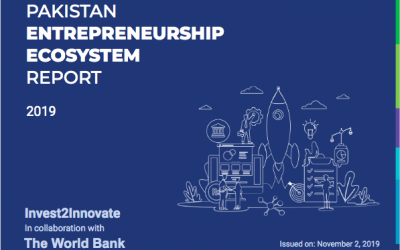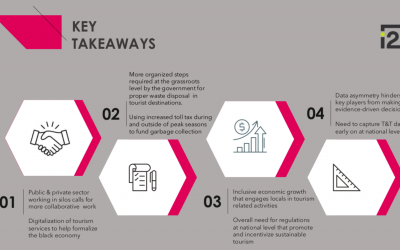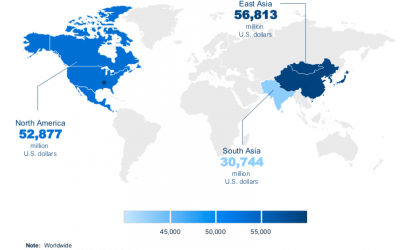Pakistan stands at a critical juncture, facing mounting environmental, economic, and social challenges. With a population surpassing 240 million, the country is grappling with soaring demand for food, energy, and resources, coupled with inefficient waste management systems and one of the highest climate vulnerability indices globally.
Amidst this pressing context, the concept of a circular economy presents a transformative path forward offering Pakistan an opportunity to align economic growth with environmental sustainability.
Moving Beyond the Linear Model
The traditional linear model of economic development take, make, dispose has left behind a trail of resource depletion, pollution, and socio-economic disparity.
In contrast, the circular economy encourages a regenerative system where materials and products are designed to be reused, remanufactured, and recycled. This shift holds immense promise for Pakistan, especially as global economies pivot toward greener, more sustainable models.
Key Milestone: National Consultation on EPR
A pivotal moment in this transition was the recent National Stakeholder Consultation on an Extended Producer Responsibility (EPR) Framework for Plastics in Islamabad.
Organized by the Sustainable Development Policy Institute (SDPI) and the European Union’s SWITCH-Asia Programme, the consultation emphasized that aligning Pakistan’s policies with international EPR standards is not just environmentally prudent but economically strategic.
Romina Khurshid Alam, the Prime Minister’s Coordinator for Climate Change and Environmental Coordination, aptly described EPR as a strategy that unites the goals of economic progress and environmental stewardship.
The Role of EPR in Circularity
EPR mandates that producers take responsibility for the lifecycle of their products, particularly post-consumer waste. This creates opportunities to:
- Build efficient recycling networks
- Reduce import dependency on plastic
- Formalize jobs within the waste management sector
Dr. Abid Qaiyum Suleri of SDPI highlighted the critical timing of this transition. With the EU’s Carbon Border Adjustment Mechanism (CBAM) coming into effect in 2026 and the UK following suit in 2027, Pakistan must prepare its industries to comply with emerging global trade requirements by incorporating EPR into national policy.
Waste Challenge or Economic Opportunity?
Pakistan generates 49.6 million tons of solid waste annually, with plastic making up a significant portion.
However, within this challenge lies an equally large opportunity. Informal recycling, reuse of materials, and repair-based economic activities are already culturally embedded in Pakistan’s society.
A well-structured circular economy model if backed by clear policy direction, public awareness, and innovation can build upon these existing practices to create new avenues of economic activity and employment.
Entrepreneurship Driving Circular Innovation
This is where the role of entrepreneurship and startups becomes crucial.
Pakistani entrepreneurs are increasingly entering the cleantech and climate-tech space, inspired by both the looming environmental crisis and the growing investor interest in sustainable solutions.
Programs like:
- SEED Ventures’ “2nd Life Pakistan”
- Renewables First’s “Climate Innovation Pakistan (CLIP)”
…are playing an instrumental role in cultivating this ecosystem.
Growing Investment in Circular Startups
A significant development is that mainstream Pakistani VC funds now actively allocate capital to climate and cleantech startups a shift that would have been unthinkable just a few years ago.
This growing investor appetite is further fueled by global momentum.
Rahmat Ullah Gill, CEO of data science company Techohub, notes that the global circular economy presents a trillion-dollar opportunity. In Pakistan’s case, circular solutions not only hold environmental merit but can also:
- Drive export competitiveness
- Create resilient supply chains
- Open access to climate financing
The Role of Academia
The role of academia in this transition cannot be understated.
Pakistani universities must embed circular economy principles in curricula spanning engineering, business, and environmental sciences. Key focus areas should include:
- Sustainable product design
- Renewable materials
- Waste reduction
These academic efforts must be bridged with industry, enabling commercialization of innovations through partnerships and pilot projects.
Private Sector Participation
The private sector also has a responsibility to champion the circular cause. Companies can:
- Redesign products for longevity and reusability
- Adopt clean production technologies
- Transform business models for instance, offering products as a service rather than selling them outright
Examples of circular opportunities include:
- Organic farming
- Refillable packaging
- Sustainable fashion
- Electric mobility
International case studies, such as Woodly’s bioplastics or Ecovative’s mushroom-based packaging, offer replicable models that Pakistani entrepreneurs can learn from.
Technology and Infrastructure: The Next Frontier
Technological innovation is the lifeblood of the circular economy.
Pakistan’s adoption of:
- Solar and wind energy
- Electric vehicles
- Waste-to-energy technologies
…is still in its nascent stage but shows significant promise.
With targeted government support subsidies, green tax incentives, and regulation these technologies can be scaled to meet national development goals.
At the same time, robust infrastructure such as:
- Waste management systems
- Producer registration frameworks
- Consumer education campaigns
…are essential to build a circular economy that is both inclusive and effective.
Expanding the EPR Framework
Pakistan must also consider expanding its EPR framework to cover not just plastics, but:
- Textiles
- E-waste
- Other high-volume materials
Countries like Japan and South Korea have implemented such systems successfully by:
- Enforcing strict producer accountability
- Supporting the informal sector
Zainab Naeem, SDPI’s Head of Circularity, rightly pointed out that Pakistan’s transition can benefit immensely from EU support under its Green Deal and Global Gateway initiatives. These collaborations can unlock:
- Technical know-how
- Funding
- Policy guidance
The Youth Leading the Way
Startups like Ad2Bag, which emerged from circular economy incubators, illustrate the untapped innovation potential within Pakistani youth.
By turning waste into opportunity, these entrepreneurs are not only reducing environmental impact but are creating:
- Employment
- New market categories
The enthusiasm and energy of such ventures demonstrate that a bottom-up movement for circularity is already underway.
A National Vision for Circularity
To accelerate this transformation, the government must embed circular principles into national development plans.
The circular economy should not be seen as a fringe or optional agenda it must be treated as a central pillar of Pakistan’s economic and environmental strategy. This includes:
- Building local manufacturing capacity for circular products
- Supporting clean transportation
- Investing in climate-smart agriculture
A Regenerative Future
The circular economy represents a golden opportunity for Pakistan to leapfrog towards a more:
- Sustainable
- Inclusive
- Resilient future
With coordinated efforts from the government, academia, industry, and startups, the country can transition away from linear models of growth and embrace a future that is regenerative by design.
The circular economy is not just a response to Pakistan’s current crises it is a pathway to long-term prosperity, global competitiveness, and environmental integrity.


